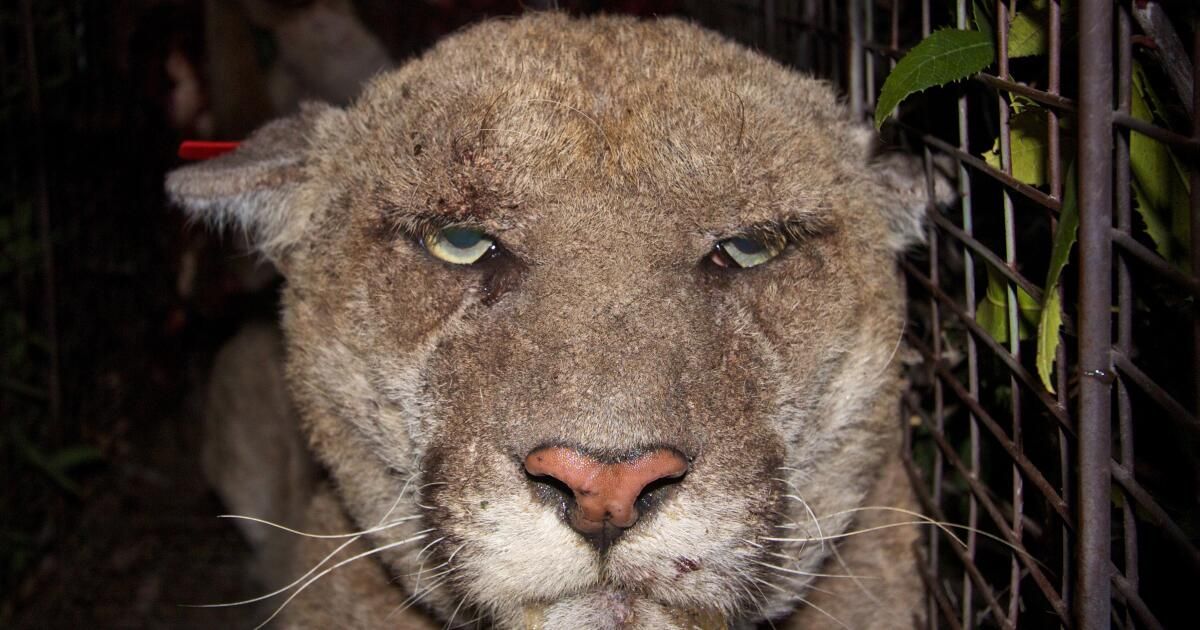For at least a decade, California has tried to restrict the use of rat poison from killing all kinds of creatures besides rats. So far it hasn't worked.
When a wild animal feeds on a rat that has ingested anticoagulant rodenticide, it can also end up dead or sick from the toxin. The poisoning continues up the food chain from predator to predator. Mountain lions, bobcats, foxes, coyotes, hawks, as well as endangered species such as the northern spotted owl and the San Joaquin kit fox, are among the wild animals that have died from these rodenticides or have become so sick that they cannot navigate their surroundings. search for food or cross a road efficiently.
The anticoagulant rodenticides didn't kill P-22, Griffith Park's beloved cougar, but they showed up in his system a couple of times, one of which caused him to have a mange attack for which he was lucky enough to receive treatment. Several different rat poisons were found in his system after he was euthanized in 2022, including diphacinone, a first-generation anticoagulant. Both rat poisons kill by causing internal bleeding. The older first-generation version is slower acting and requires the rat to feed on the poison several times before dying. The second generation version kills rats more quickly.
Ten years ago, the state banned the commercial sale of more powerful, fast-acting, second-generation anticoagulant rodenticides, allowing their use only by professional exterminators. In 2020, the state Legislature decided to extend the ban to professional uses as well, except in some agricultural settings and in public health emergencies.
But the law still allowed consumers and professional exterminators to use first-generation rodenticides, which don't act as quickly but still carry powerful toxicity capable of sickening and sometimes killing birds, mountain lions and other creatures that eat rats. A recent study of red-tailed hawks that ate prairie dogs poisoned with diphacinone showed signs of blood clotting and problems regulating their body temperature.
Despite these efforts, rodenticides continue to poison non-target animals, either by accident or improper use. Necropsies of wild animals over the years have shown that wild animals and pets continue to end up as collateral damage from these toxins. Last year, state lawmakers adopted a moratorium on the use of diphacinone, the first-generation rodenticide most commonly found in poisoned wildlife systems, except in agricultural settings and public health emergencies. That ban went into effect in January, so it hasn't had an impact yet, but there is still a lot to be done to stop these terrible toxins.
Assembly Bill 2552, introduced this year by Laura Friedman (D-Glendale), could help curb the use of banned rodenticides by empowering all Californians to become law enforcement officers. The bill, sponsored by wildlife advocacy groups, would allow the public to sue a person or company that illegally uses banned rodenticides. State and county agencies are tasked with enforcing rodenticide laws, but they cannot begin to stop all law violations.
The bill also extends the ban to the remaining first-generation rodenticides, warfarin and chlorophacinone. And it prohibits the use of all restricted rodenticides in parks and wildlife refuges, or within 5,000 feet of one.
This bill is crucial to removing from the environment these toxins that kill wildlife and pets and are also known to poison people, usually children.
And there is no need for them. Covering trash receptacles, sealing entry points to a home or building, and using non-toxic, pain-free rodenticides and traps are safer options for controlling rat populations. Fertility control products are also being used. One type is a plant-based liquid in bait stations that reduces fertility in rats (which reproduce prolifically). The liquid, which rats find delicious, has no hormones or chemicals that harm animals that eat rats. Several trials in city neighborhoods across the country have shown results as spectacular as a 90% reduction in the number of rats after several months.
The text of the bill insists that animals are capable of experiencing pain, stress and fear, and that they have the “right to a life free of poison.”
Such language does not imbue animals with rights that take precedence over human rights. If that were the case, these rodenticides would be banned without exception. But it does underscore something important: that humans should strive to minimize animal suffering, especially when it is unnecessary. That is the case here.











